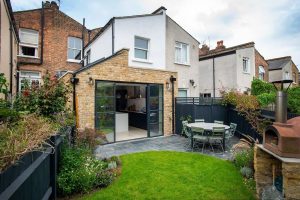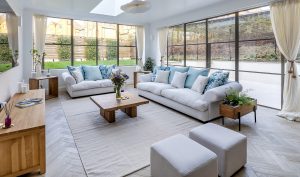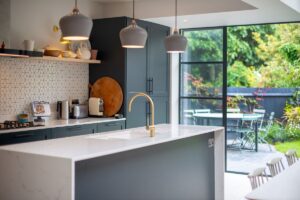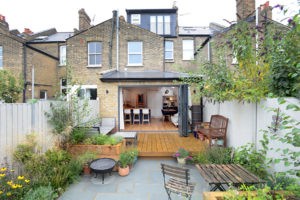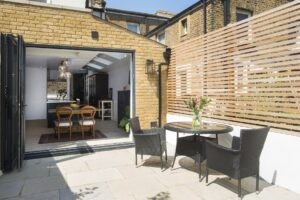When planning the kitchen for your Side Return Extension one consideration is which worktop to specify. What constitutes the ‘best’ in kitchen worktops is relative and is often a question many of our clients ask.
Truthfully, there is no ‘best’, as all have their pros and cons, so it really depends on your needs. Here’s a handy rundown of some of the most popular types of kitchen work surfaces, detailing the pros and cons of each:
Glass
Glass creates a light, spacious, and airy environment, and particularly compliments a dramatic glass-sloped side return extension. It’s especially beneficial in areas of the kitchen that might regularly suffer from spills, such as around the basin. The material absorbs much less water than granite and marble, which will help to elongate the life of the worktop.
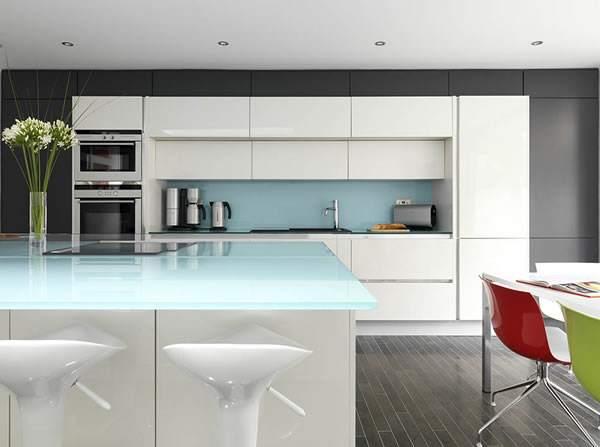 The bad news is that glass is much more susceptible to the effects of heat than natural stone worktops. While natural stone can withstand heats of almost 400 degrees celsius without cracking, glass can crack at heats of 170 degrees. If opting for glass, you’ll need to ensure you have plenty of heat resistant trivets dotted around your kitchen.
The bad news is that glass is much more susceptible to the effects of heat than natural stone worktops. While natural stone can withstand heats of almost 400 degrees celsius without cracking, glass can crack at heats of 170 degrees. If opting for glass, you’ll need to ensure you have plenty of heat resistant trivets dotted around your kitchen.
Granite
The natural density of granite is what homeowners really love about the material. It’s what gives granite strength and durability, and also means that the material is a very poor conductor of heat. Granite is cold to the touch, which is great for passionate cooks and bakers. The cold surface makes rolling pastry dough a piece of cake.
 Certain substances such as hard water and acidic food can cause granite to stain badly. This means it needs to be cleaned quickly and thoroughly to keep it looking its best, so it’s not recommended for people who are constantly busy and on-the-go.
Certain substances such as hard water and acidic food can cause granite to stain badly. This means it needs to be cleaned quickly and thoroughly to keep it looking its best, so it’s not recommended for people who are constantly busy and on-the-go.
Corian
The beauty of Corian is its seamless joints. This seamlessness provides a unique flow that helps create unity between the main kitchen space and a kitchen extension. What’s even better is that the seamless joints mean Corian is remarkably hygienic, as no small food particles can become trapped in tiny gaps. In fact, Corian is so hygienic that many hospitals are installing Corian surfaces to reduce the risk of disease and infection.
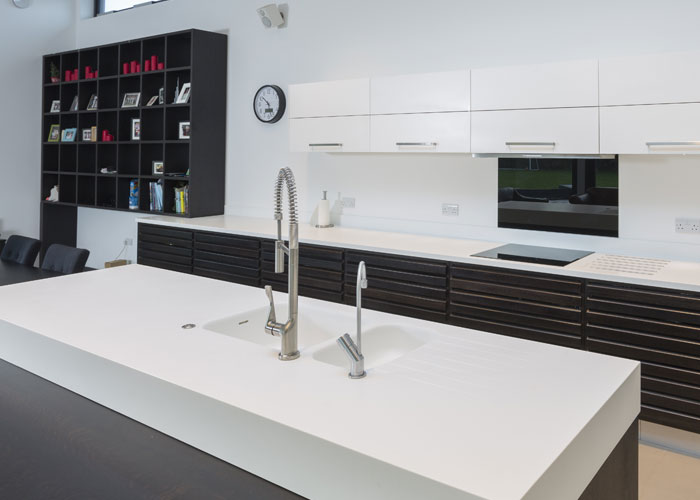 Corian is often likened to granite, but it isn’t as durable as natural stone and can be vulnerable to scratching. Corian can also be quite pricey, rivalling granite as one of the most expensive worktops available.
Corian is often likened to granite, but it isn’t as durable as natural stone and can be vulnerable to scratching. Corian can also be quite pricey, rivalling granite as one of the most expensive worktops available.
Solid Wood
Whether it’s in the kitchen area itself, or in the dining area, there’s nothing quite as classic and versatile as a solid wood surface. This can be seen at a recent Side Return Extension project that we completed in Islington, pictured below, where we installed a solid wood worktop.
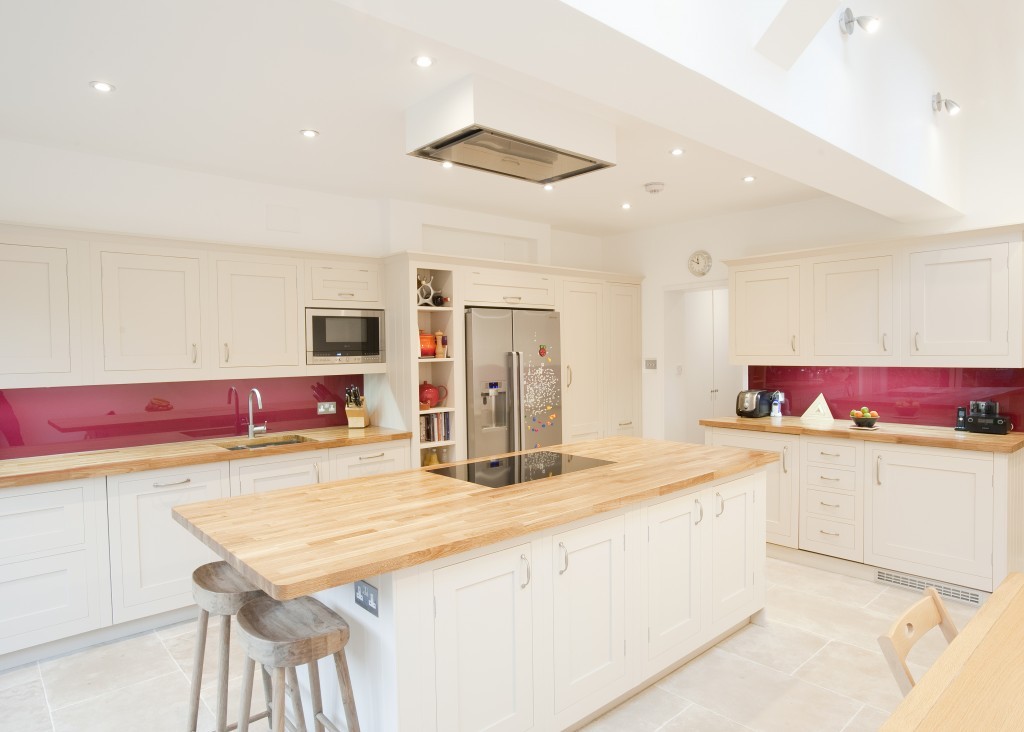 However, it can be quite high maintenance, requiring upkeep to ensure it remains clean and stain-free. Spills need to be wiped immediately due to wood’s porous nature, and ideally the wood should be treated with oil on a regular basis to prevent the material from drying out and cracking.
However, it can be quite high maintenance, requiring upkeep to ensure it remains clean and stain-free. Spills need to be wiped immediately due to wood’s porous nature, and ideally the wood should be treated with oil on a regular basis to prevent the material from drying out and cracking.
Making a Decision
Remember, there is no ‘one size fits all’ when it comes to kitchen worktops for your side return, and what suits one household might not suit another. Your worktops are a central focus of the kitchen, and if you want your kitchen and dining area to look perfect, it’s important to take time to consider the options. Take into account the pros and cons of different materials before committing to a purchase.


